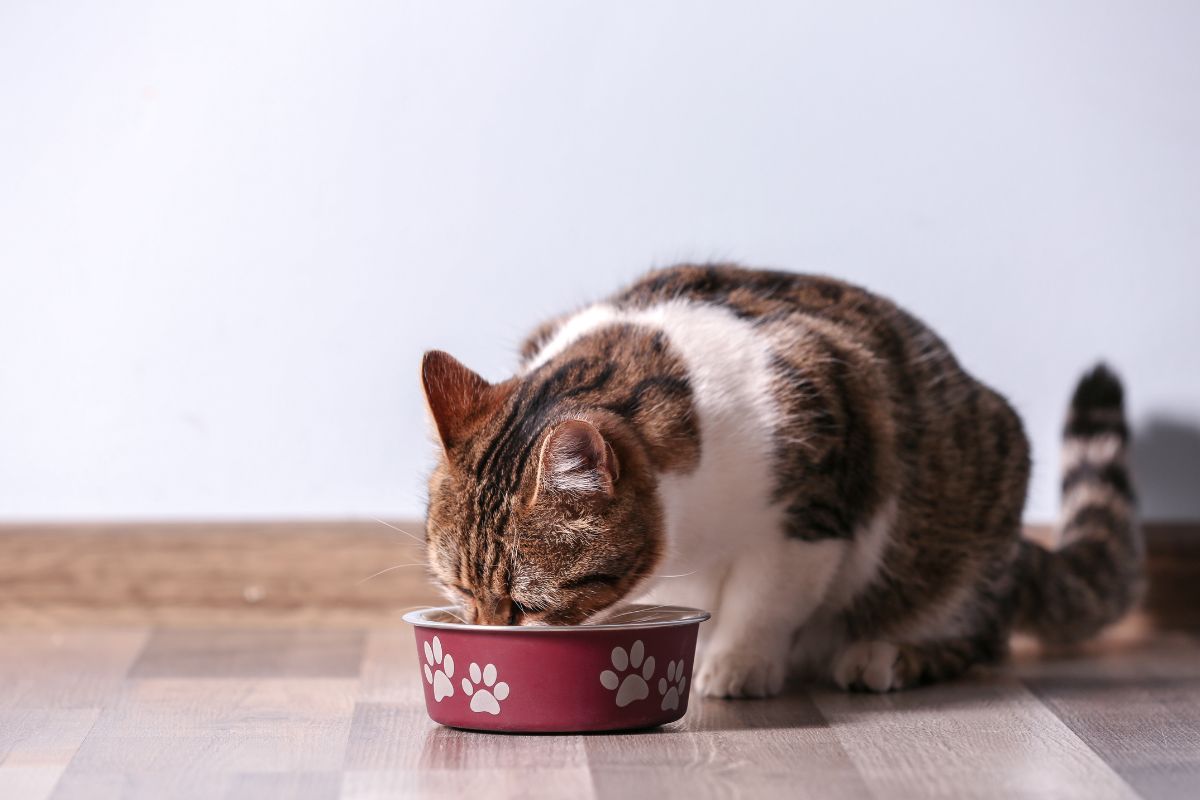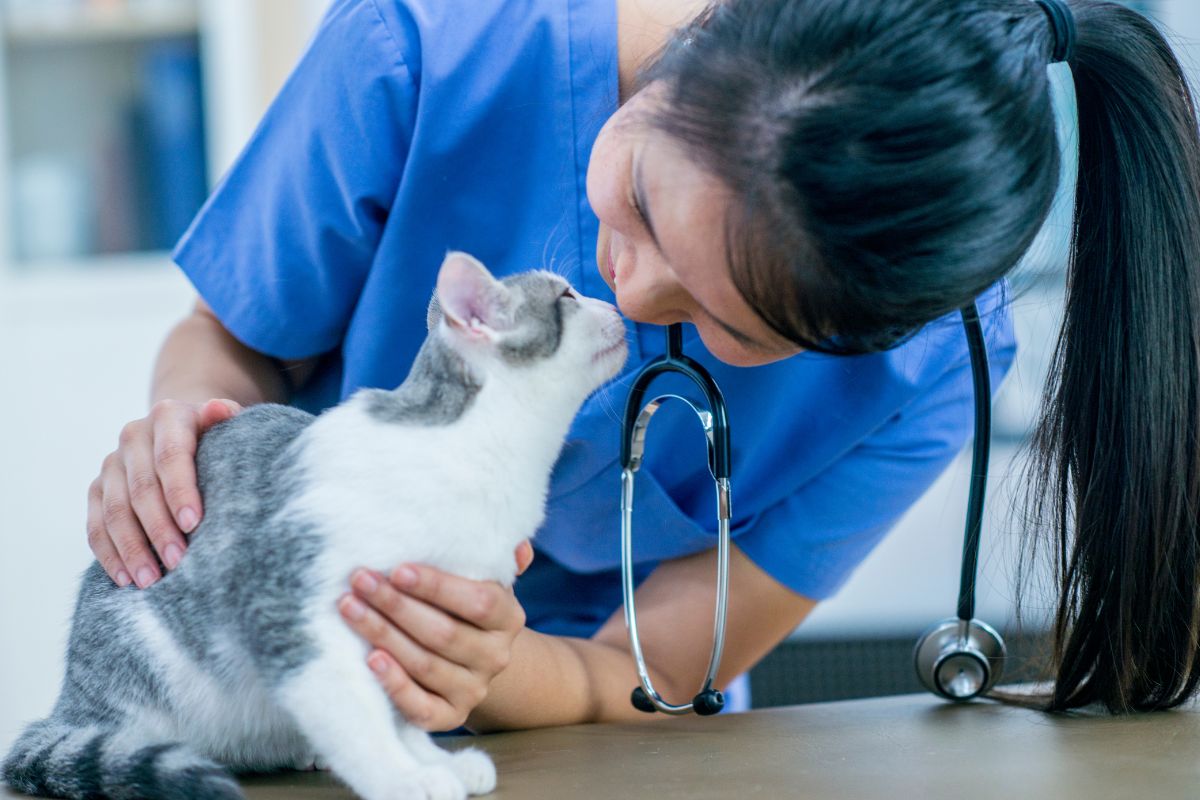Cats are known for their meticulous grooming habits, but even the cleanest feline can benefit from a little help to keep their coats looking (and feeling) shiny, soft, and beautiful. A healthy coat is a good reflection of a cat's overall health. From grooming techniques to dietary advice, here are some unmissable tips to help your cat maintain a lustrous coat.
Grooming Techniques
Grooming your cat, especially those with long hair, is a must! Not only will grooming your furry friend get rid of old hair and keep their coat looking beautiful and shiny (ready for those photo opportunities!), but it will also strengthen your bond. Not to mention, some cats absolutely love getting their hair groomed.

Regular Brushing
Brushing your cat regularly will help remove loose fur and dirt and will help distribute their natural oils throughout the coat and prevent matting. How often you’ll need to brush your cat depends on their coat type. Short-haired cats may only need brushing once a week, whereas long-haired breeds might require daily attention to prevent tangles.
Choosing the Right Tools
It’s important to use a brush or comb that’s specifically suited to your cat's coat. A soft bristle brush is good for most hair types and should glide gently through the fur with ease, while a wide-toothed comb may be better for long-haired breeds.
Gently work through knots and be mindful not to pull too hard, as this might hurt your cat. The gentler you are, the longer they are to sit still.
Bathing
Though most cats clean themselves, you may need to give them the occasional bath. This might be because they’re outdoor cats and may need a little extra help to keep clean. If you do choose to give your cat a bath, make sure to use a mild, cat-specific shampoo that won’t cause irritation. Ensure the water is lukewarm – not too cold and not too hot.
We don’t recommend bathing your cat more than a few times a year. Bathing too often can strip the natural oils from their fur and cause skin irritation, so limit this to when they're particularly dirty or as advised by a vet.

Dietary Considerations
Just as with humans, the food you put in your cat’s body can have an effect on their outward appearance.
High-Quality Protein
Protein is so important to a healthy cat diet and vital for coat health. Make sure to check if your cat's food is high in animal protein, as this will help maintain fur softness and shine.
Omega-3 and Omega-6 Fatty Acids
These essential fatty acids are key to a shiny coat. Look for cat foods that contain fish oil or flaxseed oil, as these are ingredients that are rich in these fatty acids. Supplements can also be added to your cat's diet, but make sure to consult with a vet before you give them anything.
Hydration
Fresh, clean water is essential for your cat's overall health and helps keep their skin and coat hydrated. Some cats prefer running water, so consider a cat water fountain if you think your pet isn't drinking enough.

Cat Coat Problems and What They Might Indicate
A cat's coat is often a mirror of their overall health, and changes in its condition can be the first sign of medical issues. While it's normal for a cat to shed and go through minor coat changes with the seasons, certain problems like matted fur, dullness, excessive hair loss, or skin issues should not be overlooked. Here's what these coat problems might indicate and when it's time to consult a vet for help.
Matted Fur
Matted fur occurs when loose hair gets tangled and knotted. While long-haired breeds are more prone to matting, any cat can experience it if they are not groomed regularly. Mats are not only unsightly but can also be painful for your cat, pulling on their skin and leading to sores or infections. There are many reasons why your cat might have matted fur, but potential causes include obesity (which prevents cats from grooming certain areas), arthritis (which makes grooming painful), or neglect.
If your cat’s fur is matted, but you make sure to groom them regularly, consult with your vet to see if there are any underlying issues.
Dull, Lifeless Coat
A coat that has lost its shine and feels rough or dry can indicate several health issues. Nutritional deficiencies are a common cause, particularly a lack of essential fatty acids or protein in the diet.
A dull coat may also stem from internal issues such as parasites, infections, or chronic diseases (e.g., kidney disease, hyperthyroidism). Additionally, a lack of regular grooming, whether by the cat or their human, can contribute to a lackluster appearance.

Excessive Hair Loss
While shedding is normal (especially with long-haired cats), excessive hair loss that leads to thinning fur or bald patches is a concern. This can be caused by stress, allergies, fungal infections, parasites (like fleas or mites), hormonal imbalances, or autoimmune diseases.
Some cats may even over-groom due to stress, which can lead to hair loss. If you notice patches of skin on your cat’s body, it’s definitely time to talk to a vet.
Skin Issues
Skin problems in cats, such as redness, bumps, rashes, or scabs, are often closely linked with coat health. These issues can be caused by allergies (to food, environmental factors, or flea bites), fungal infections, or ectoparasites. Skin conditions not only affect the coat's appearance but can also be uncomfortable for your furry friend and make their skin itch.
When to Consult a Vet
Every cat is different, so it can be hard to know when you should take them to a vet. However, there are a few signs that shouldn’t be ignored, whether you’ve noticed them for weeks or just a few days.
Consult a veterinarian if you notice any of the following:
- Persistent coat problems despite proper grooming and diet adjustments
- Signs of skin infections or parasites
- Excessive scratching, licking, or grooming
- Sudden hair loss or bald patches
- Any other changes in behavior (such as restlessness) or health that accompany coat changes
A vet will be able to diagnose the underlying cause of a coat problem through a physical examination, dietary review, and possibly blood tests or skin scrapings. Treatment might involve dietary adjustments, medication, parasite control, or other specific interventions, depending on the diagnosis. But soon enough, your cat will be back to their old self in no time.

Preventive Measures
Preventing coat and skin problems starts with regular grooming, a balanced diet rich in essential nutrients, regular parasite control, and routine veterinary check-ups. Keeping an eye on your cat's coat condition can help you catch potential health issues early, ensuring your feline friend remains healthy, happy, and beautiful.
Other Important Tips
- Regular check-ups – Regular visits to the vet can help you catch any underlying health issues that might affect coat health, such as allergies or thyroid problems.
- Stress reduction – Stress can impact your cat's coat, so create a calm environment. Provide plenty of playtime, scratching posts, and private areas where your cat can retreat if they feel overwhelmed or overstimulated.
- Try treats – Some cats may not enjoy brushing or bathing. Use positive reinforcement, like treats and gentle praise, to make grooming sessions more enjoyable for your cat, especially if you’re tackling any mats in the fur.
- Avoid overgrooming – Too much grooming can indicate a problem, too! Watch for signs of excessive grooming, such as bald patches or skin irritation, as this can indicate stress or health issues.
By incorporating these grooming practices and dietary habits, you can help ensure your cat's coat remains shiny, healthy, and beautiful. Remember, a shiny coat starts with good health, so prioritize your cat's overall well-being for the best results.

